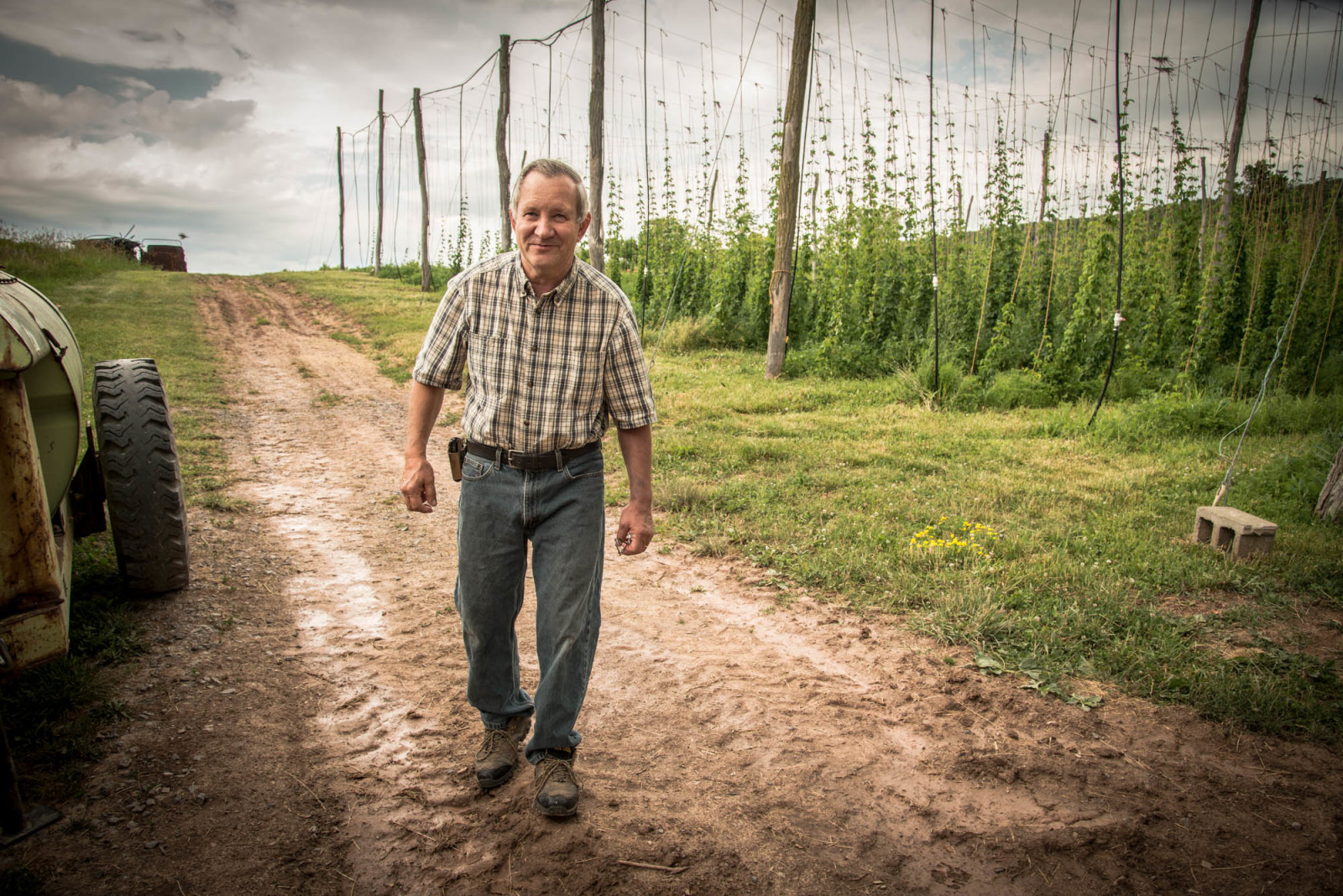
(8/30/16 – Craft Beer & Brewing Magazine) A hundred years ago, the hills of central New York—from Syracuse to Cooperstown and beyond—were covered in hops farms. For a significant time in the American history of brewing, it was the place to grow the bines that produce those bitter little cones. Those were the days before wire trellises, when hops farms would train the bines to climb around wooden posts planted in the ground, and it took manual labor to strip the cones from the bines.
Then something horrible happened—an outbreak of downy mildew decimated the 1909 crop, and an infestation of aphids in 1914 was enough to convince most of the major farms to shift gears. By the time Prohibition rolled around, the hops farms were mostly gone, and hops production shifted to the Pacific Northwest. Farmers planted other crops or switched to dairy, as refrigeration made it possible to ship their goods down to the burgeoning population of New York City. Hops became a footnote of New York state history, buried under layers of soil now fertilized by gentlemen’s farms.
But hops, you know, are a hardy plant. They might die back in the winter, but they sprout again in the spring. In dry years, the bines might die off but the root rhizome conserves its energy to live another year. They’re hardy and hard to kill. And if you can’t see where this metaphor is going, then let me just explain it to you—New York’s homespun beer heritage might have gone dormant for a while, but it was just biding its time for more favorable conditions.
Today, through the hard work of politically active brewers, civic-minded legislators, a forward-thinking governor who looks out for small business and independent entrepreneurs, and new laws built to support the brewing industry throughout the state, New York is reclaiming its beer heritage, and the heart of that reclamation effort beats in the center of the state, in an area they’ve recently dubbed “Brew Central New York.”
Political Will
The thing that sets New York apart from other centers of beer culture around the country is the legislative activity of the brewers’ guild and the relationships they’ve built in Albany, the state capital. In 2016 alone, four new laws benefitting craft brewers went into effect, cleaning up difficult rules and regulations from prior legislation and making it easier to build and grow a craft brewery. Brewers in most states are happy to get one new law passed every few years. But not in New York.
In 2012, Governor Andrew Cuomo signed the Farm Brewery bill—a sweeping piece of legislation aimed not just at promoting the growth of brewing in the state, but all the attendant industries as well—agricultural production of hops and barley, malting, etc. Under provisions of the law, it’s very easy and streamlined to get a farmhouse brewery license, with the caveat that by 2024, 90 percent of the hops and malt used by the breweries must be grown in New York State.
While this might sound like a pie-in-the-sky ideal, the real world consequences are phenomenal. In 2013, hops acreage in New York State was so small as to not be tracked by the Hop Growers of America annual statistical report. Then in 2014, that acreage grew to a reported 150 acres. In 2015, that acreage grew again to 250 acres. While this is a drop in the bucket compared to the PNW powerhouse states of Washington, Oregon, and Idaho, consider how many acres were planted in the neighboring states of Vermont (45 acres), Pennsylvania (5.5 acres), and New Jersey (1 acre). In 2015, New York State accounted for 20 percent of all U.S. hops grown outside of the PNW. As a state, it’s fifth in production overall behind the big three plus Michigan.
On the malt side, craft maltster Pioneer Malting in Rochester works with New York’s barley farmers to grow barley for malting to their specifications. And larger industrial maltsters are moving into the state in order to supply NY-malted grains to meet these requirements.
The legislation has kickstarted nothing short of a top-to-bottom supply chain revolution, but with that basic premise in place, let’s get to the meat of the matter—the beer (and places to drink it).
Syracuse
It’s hard to get more central than Syracuse, smack dab in the middle of the state. This college town might be best known for its dominant basketball program, but it’s always had a cool, countercultural streak as well. The nineties’ metalcore legends Earth Crisis called Syracuse home, and more recently downtown Syracuse has been experiencing a creative revival with businesses and residents taking advantage of the cool, historical, inexpensive industrial real estate.

Downtown, start at Empire. This subterranean brewpub has been a staple since 1994, with a full menu and an extensive lineup of their own beers, including the award-winning Skinny Atlas Light blonde ale and Black Magic Stout. Order a Kobe Burger with their American “Wagyu” beef for reasons you’ll soon understand.
Across the street from Empire, pop in to Blue Tusk, a pub that’s flown the flag for craft beer in Syracuse since 1995. Owner Mike Yorton is quite a character, and that personality and passion are reflected in his beer selection and service. Whether you grab a seat at the bar or tuck into one of the more private booths in the back, it’s a classic and comfortable place to down a pint of Other Half IPA or the latest draft-only release from Brewery Ommegang.
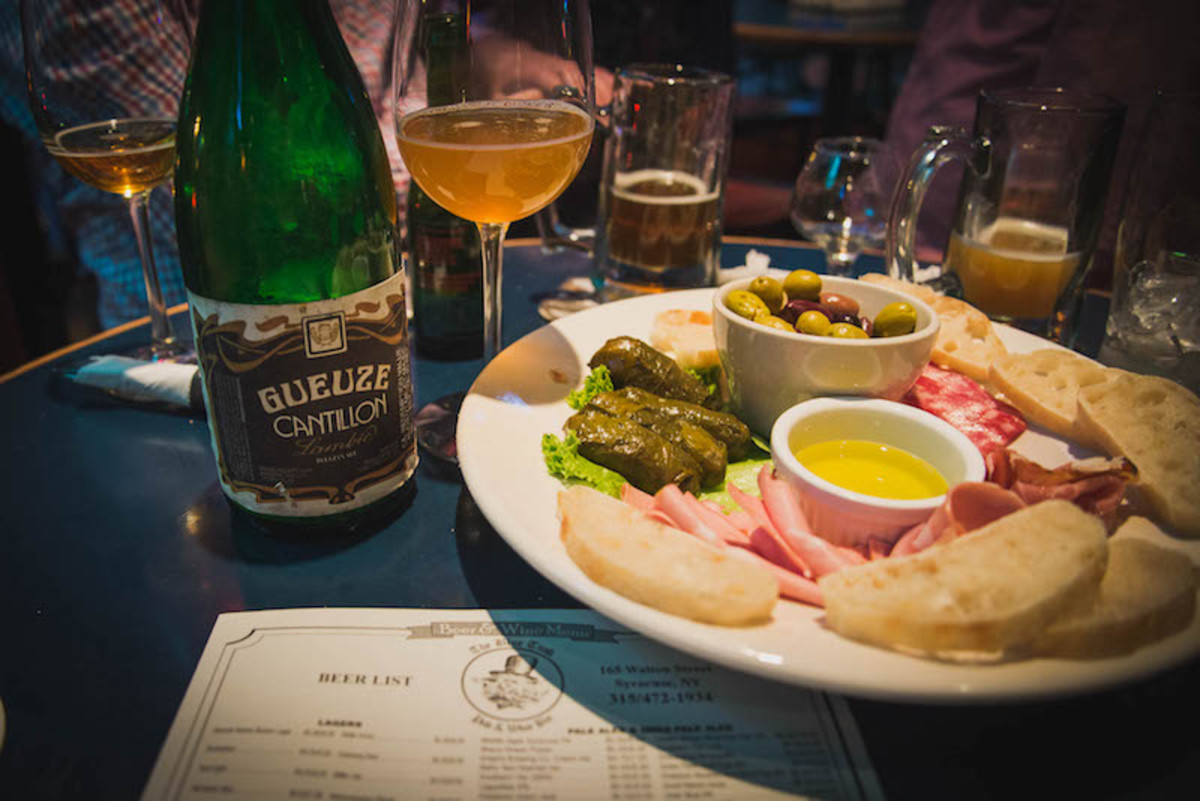
If you’re up for heftier fare, swing over to Dinosaur Bar-B-Que—the (now) chain got its start in Syracuse, and this is restaurant #1. Then pop into Middle Ages Brewing for a taste of their English-inspired ales. Brewing geeks will want to check out their direct-fire mash tun and open fermentors—they embrace historical techniques as well as styles.
Skaneateles and Camillus
The many small towns of Central New York make it perfect for exploring, and the relative proximity of the various towns means you’ll never be in the car uncomfortably long. Make your first stop at Local 315. When the term “farmhouse brewery” is thrown around in the beer world, it can mean anything from a brewery and taproom in downtown Boston to a concrete warehouse in the mountains of Colorado, but when Local 315 uses the term, they literally mean farmhouse. Their chickens, goats, and donkey are fenced into a pen that adjoins the brewhouse and taproom, and they grow their own hops on a few trellises right there on the property. In the field behind the brewery, they’ve planted pumpkins as a fall attraction.
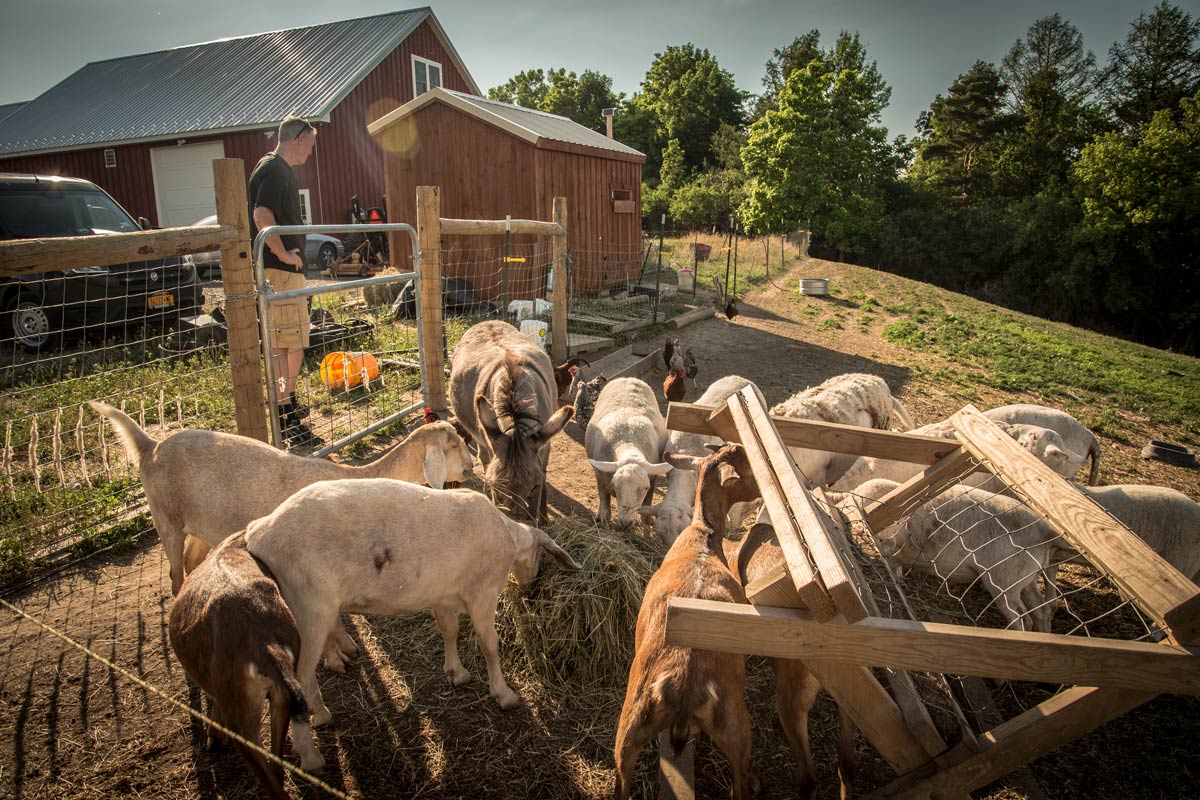
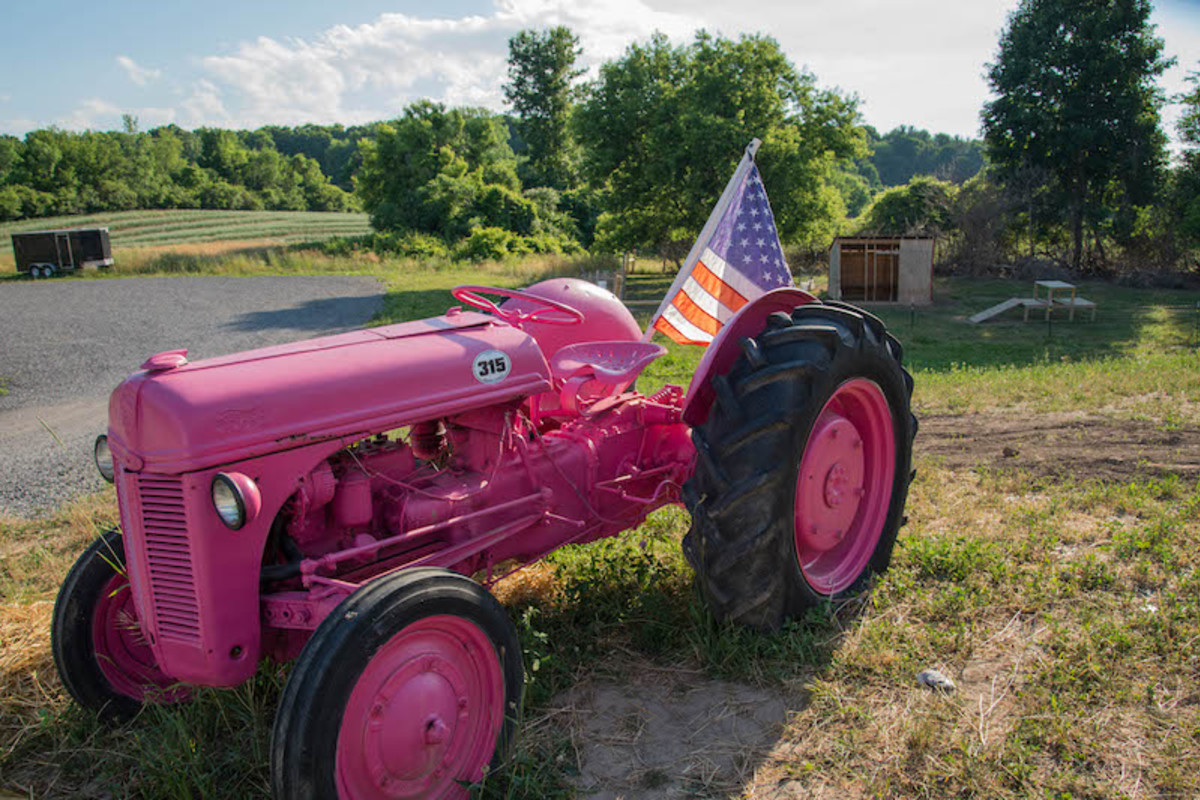
Then head to Skaneateles for a visit to Finger Lakes On Tap. Their sixty taps are filled primarily with local New York breweries, making it a great place to sample a range of the region’s finest.
From there, head east into apple country and don’t miss the tasting room at 1911 Spirits. A fifth-generation family business, this massive orchard (they estimate they have more than 350,000 apple trees!) has diversified as of late into hard cider and distilled spirits, and they have the trees to do it. While other cider makers struggle to find flavorful cider apples, this family has been growing culinary varieties from the start that add layer and depth to their cider. And if you want something harder, the apple vodka and gin are excellent.
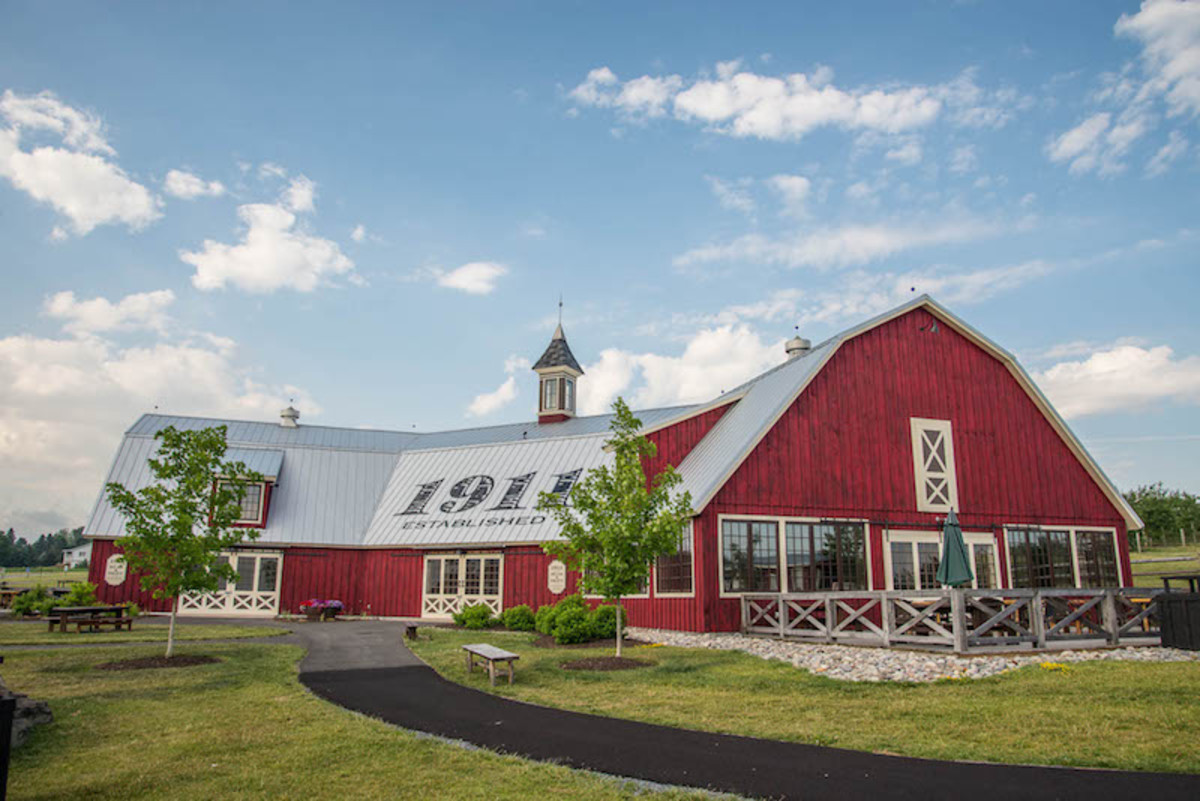
Cazenovia
Southeast of Syracuse, in the small town of Cazenovia, Empire Brewing recently realized their vision and opened their farmhouse production brewery. This gorgeous new facility is thoughtfully designed to help the brewery work with the environment around them, from the acre or two of hops trellises they’ve planted in front of the brewery to their spent grain transport system. While most breweries have to truck their grain out to farmers for use as feed, Empire’s brewery is located exactly across the street from the farm where the American Wagyu beef they serve is raised. A pipe draws the used grain from the mash tun where it’s deposited in a hopper attached to a tractor that drives it across the street when full, tightening the circle of reuse and sustainability. Everything from the beer to the food to the décor is well thought out, and the twin turntables in the taproom attached to locally made McIntosh tube amps are a touch that any audiophile will appreciate.
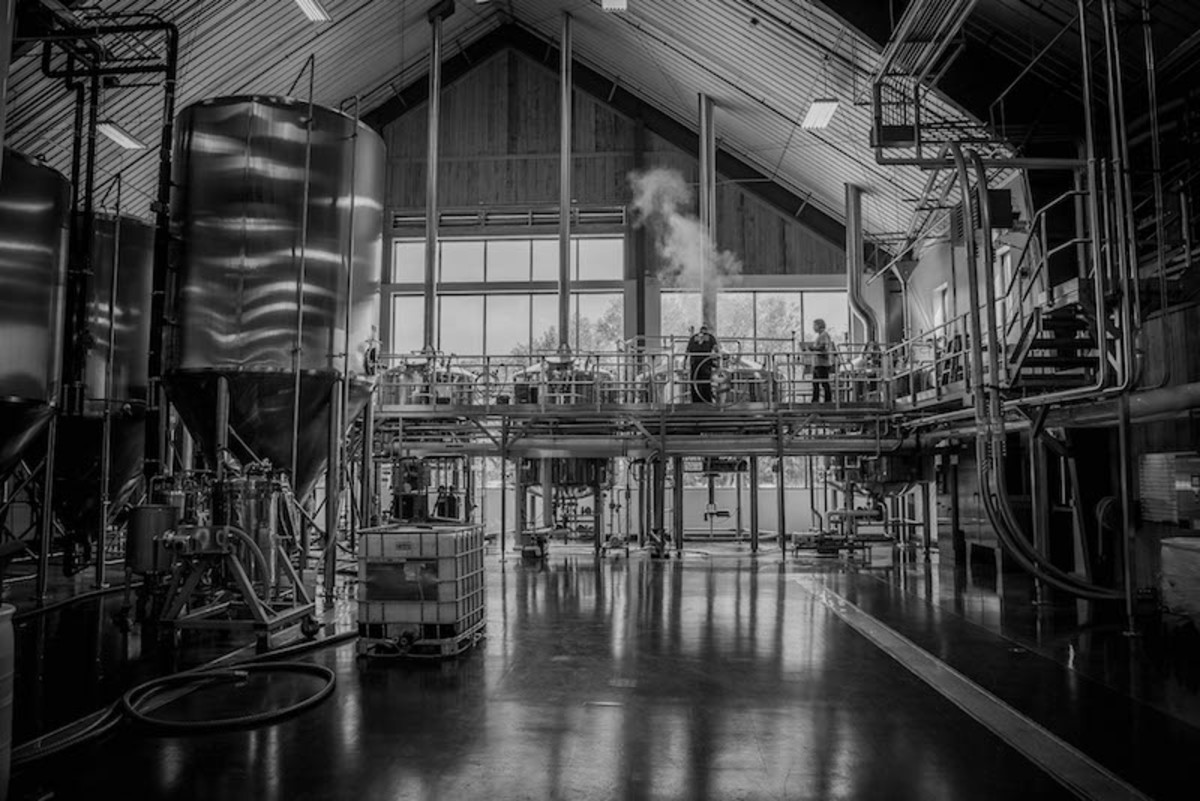
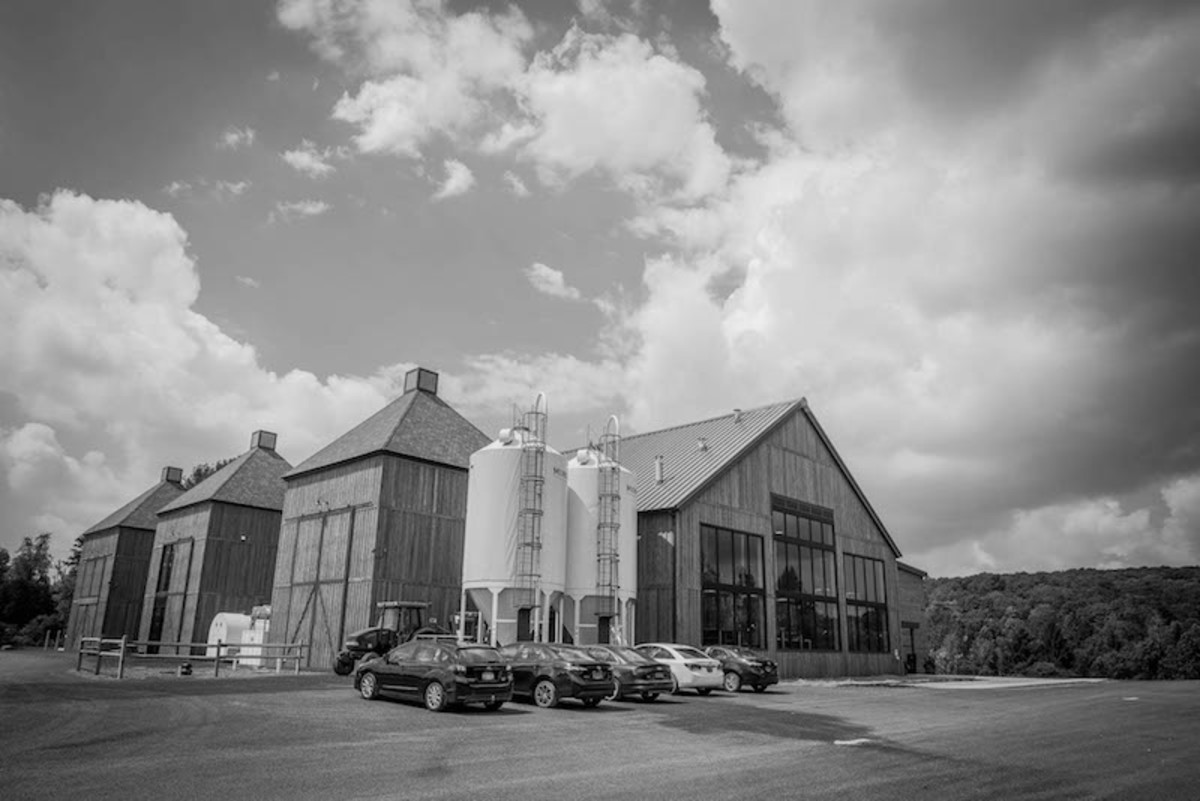
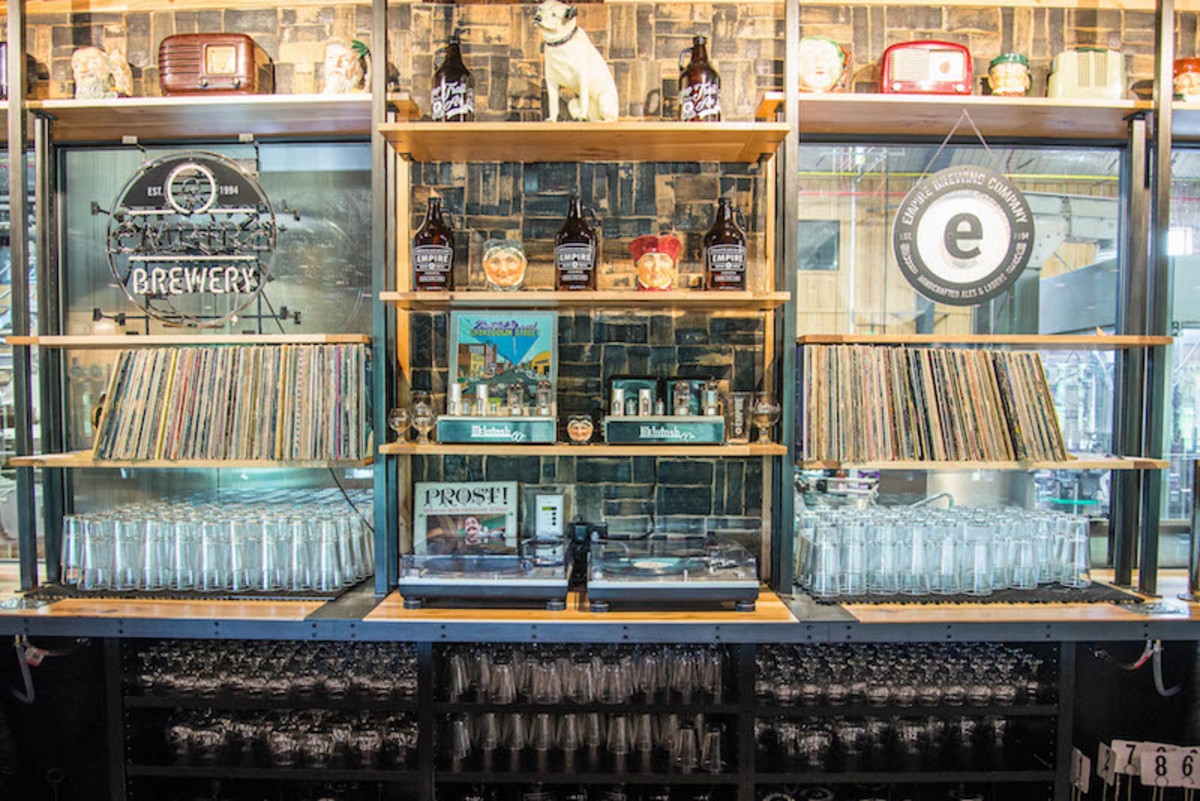
For a casual lunch, stop by the historic Lincklaen House and head to the basement pub for a step back in time. If hard spirits are your thing, locals Life of Reilly distilling offers some popular flavored vodkas.
Hops Heritage
Farther east in Munnsville, stop by Foothills Hops Farm where Larry (pictured at top) and Kate Fisher put their first hops in the ground back in 2001. If you’re a fan of industrial engineering, ask to see Fisher’s homemade wolf picker and hops separator—his day job running an engine repair business prepared him well for the challenge of building his own machinery for hops harvesting and processing. Fisher now boasts several acres of hops and is opening a brewery and taproom in addition to the homebrew shop at the farm.
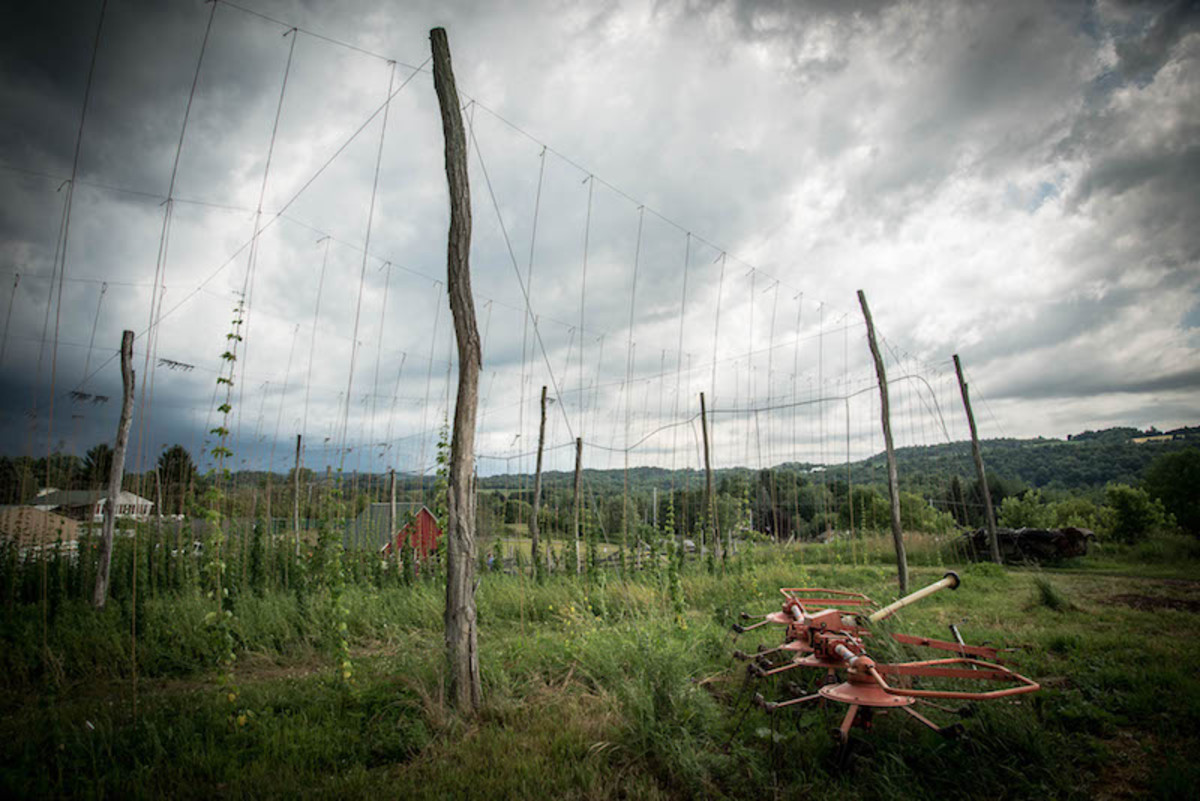

Just to the south, Mosher Farms offers similar fields of hops trellises along with a farmstand with seasonal fresh veggies.
Hamilton
Continuing south, you’ll soon hit Hamilton, home of Colgate University and more small-town New York that will take you back in time. The gorgeously appointed Colgate Inn is the place to stay—the recently renovated rooms are stylish, but the real selling point is the first floor pub with expertly crafted food and a beer list that will floor you. I ordered a Founders Kentucky Breakfast Stout (KBS) that I savored like dessert.
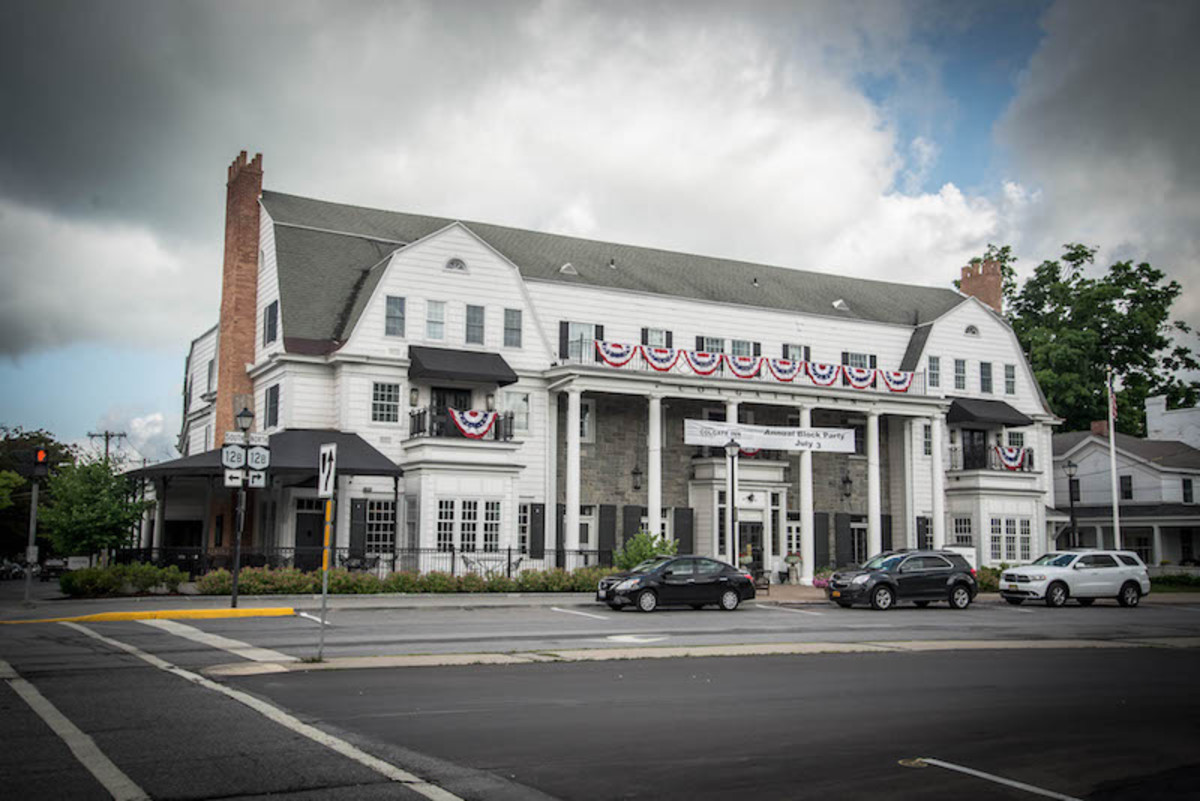
Across the street, you’ll find the taproom for Good Nature Farm Brewery & Taproom. They’re in the process of building a new brewery and tasting room closer to the Colgate campus, but in the meantime they’ve set up shop in the small downtown with a cozy taproom featuring a wide range of their beers.
Cooperstown
From Hamilton, push east to Baseball City, USA, and join the quarter million tourists who visit this hamlet every year. Despite the traffic, Cooperstown is a beautiful town, perched on the southern end of Otsego Lake. For the best dinner views, post up on the back patio of the Otesaga Resort Hotel at the Fire Bar or Hawkeye Bar & Grill and enjoy a glass of local beer while the sun sets.

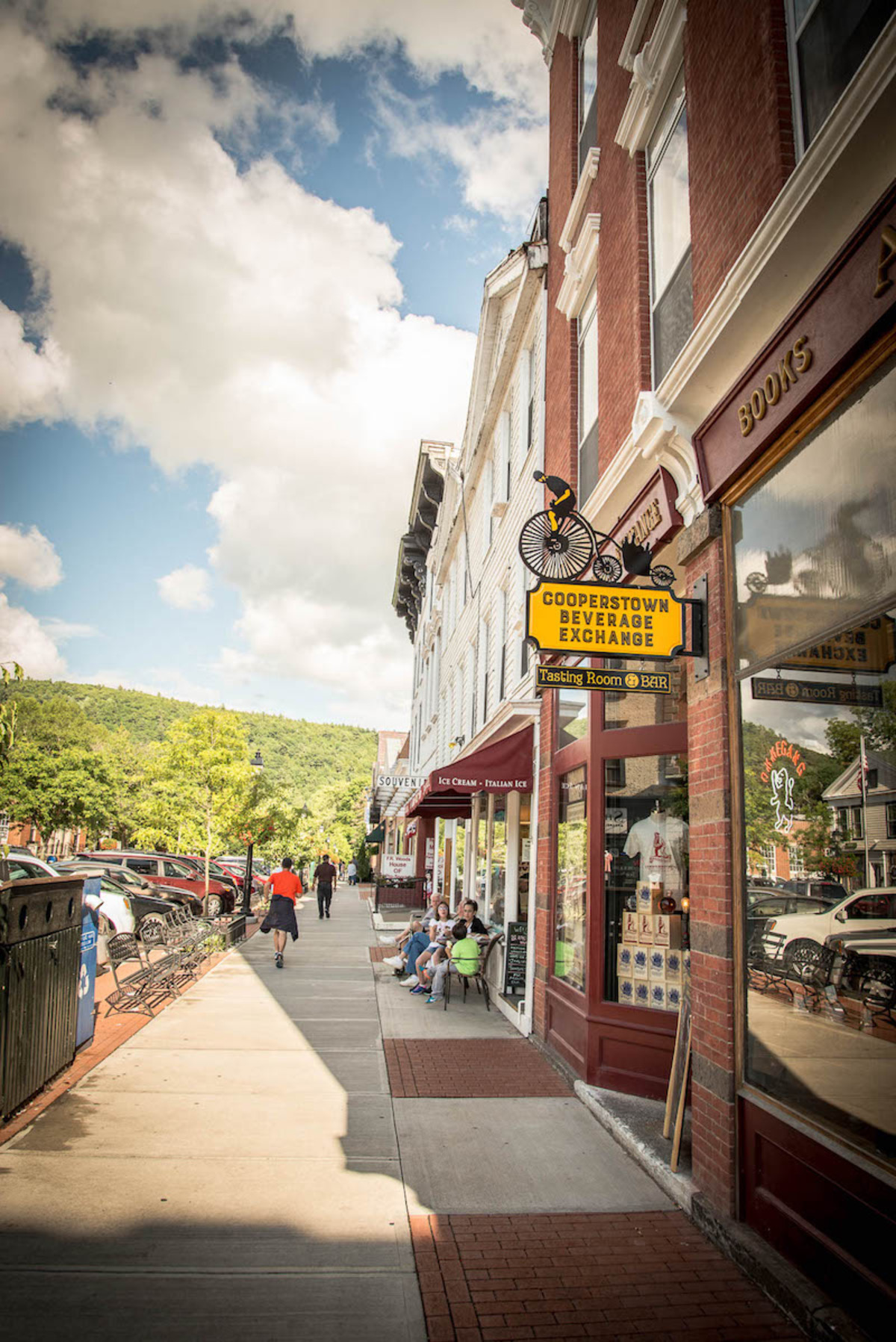
For more local flavor, brave the crowds on Main Street and stop by the Cooperstown Beverage Exchange. Owned by the Cooperstown Distillery, this outpost exclusively focuses on local beer, wine, and spirits. The Baseball Hall of Fame is only a few blocks away—a must-see if you’re a fan of the game. And if you’re traveling with kids, a visit to the Fly Creek Cider Mill & Orchard is always fun. Their water-driven apple press is very cool to see in action, and their hard cider and apple wine won’t disappoint.
Just up the road, you’ll find more evidence of hops resurgence in Brew Central NY. Hollyhock Farm has just planted a field of hops this season they’ve dubbed “Hollyhops,” and a few minutes from there you’ll find the Hager Hops farm. The Hager family are descendants of Adolphus Busch (yes, of that Busch family), and the elder Hager owns the region’s Northern Eagle beer distributor as well as Cooperstown Brewing. A couple of years ago, the younger generation of Hagers decided to get back into farming hops on their family land and trellised and planted 11 acres. The farm is private property with no activities on site, but it’s a stunning sight to behold hops growing again on these rolling hills that were once covered with them.

South of Cooperstown, set back from a small country road in a pocket of foothills, you’ll find the now iconic Brewery Ommegang. It’s no exaggeration to say that Ommegang has played a formative role in popularizing Belgian-style beer in the United States, and the brewery itself is modeled after a Belgian farmhouse. It’s a bucolic and relaxing place to spend the afternoon, drinking delicious beers on the back patio with views of their hops trellises at the far side of the property across the grassy meadow. You won’t want to leave.
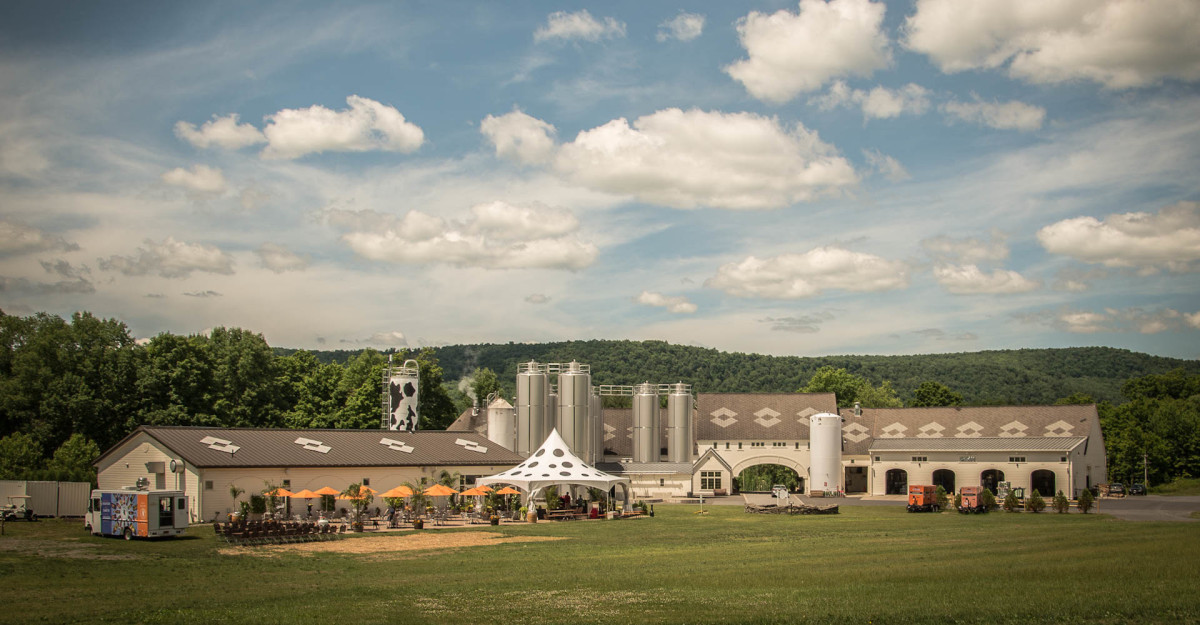
Utica
Newcomers Woodland Hop Farm & Fermentation launched with grand dreams of growing and brewing, but due to zoning issues have had to settle for just brewing as of late. Thankfully, their barrel-aged beers (some aged in barrels from the new Adirondack Barrel Cooperage) are worth the visit, and their Down N Dandy saison with dandelions is highly recommended.
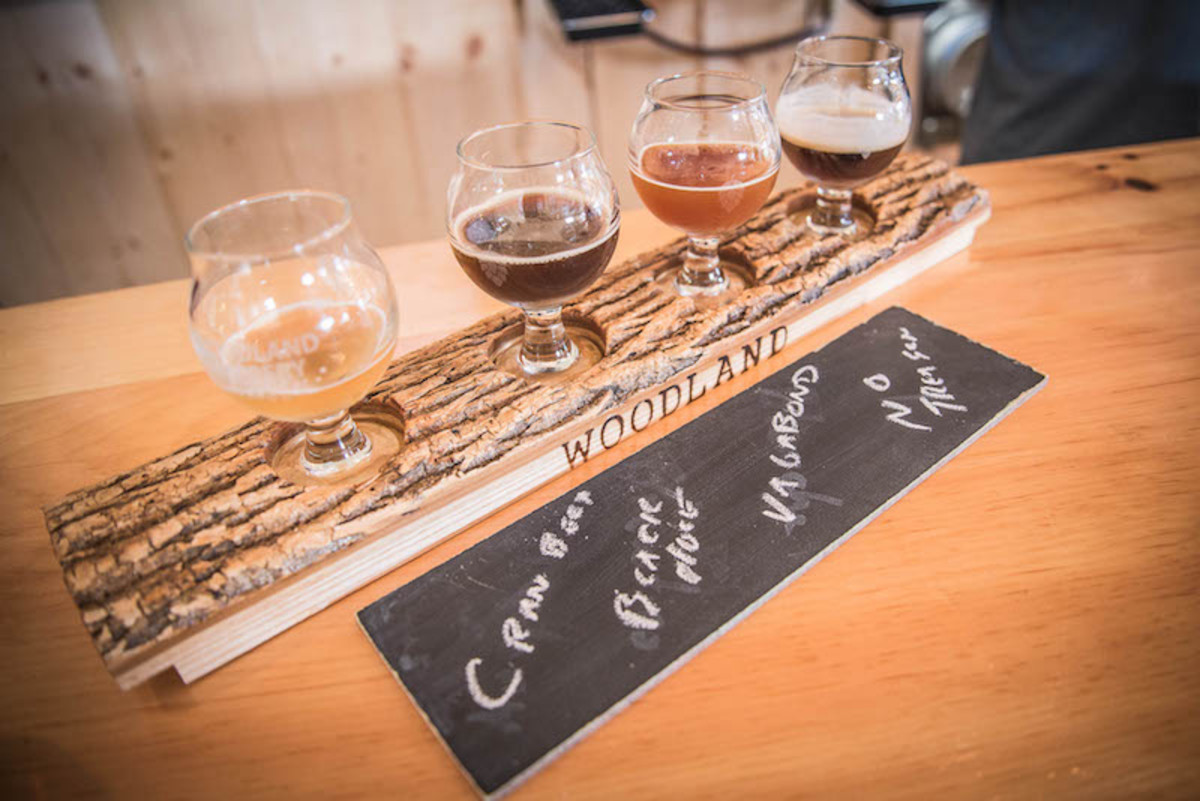
Located in Utica’s brewing district next door to their gigantic neighbors, Nail Creek Pub & Brewery has been more “pub” than “brewery” as of late, but plans are in the works to start brewing again in late 2016. Nevertheless, their guest tap lines feature the widest range of beer imaginable, from the classic Utica Club Pilsner (they claim to sell more of it than any other bar, anywhere) to the Hill Farmstead and Blaugies collaboration saison, La Vermontoise. The food is excellent, and the beer is even better.
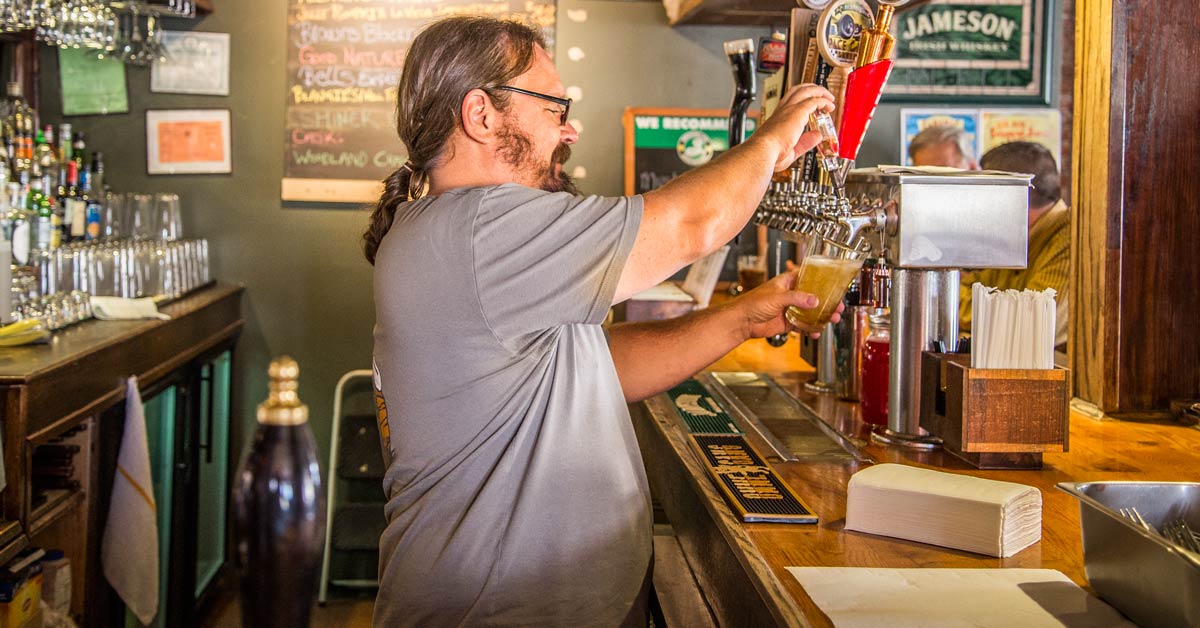
Your final stop on a tour of “Brew” Central New York should be the biggest—F.X. Matt Brewing/Saranac. This legendary brewery remained independent and family-owned through decades of brewery consolidation, and today is one of the largest craft brewers in existence. Brewing fanatics will love the tour that takes you through their massive brewhouse—the 500 bbl kettle and huge mash filter are technical marvels. But in a nod to the times, they’ve begun filling barrels with beer and aging those barrels next to their lagering tanks. It’s a stunning juxtaposition—1,600 bbl lager tanks with wooden barrels racked six-high behind them. Over a million people have taken the Matt Brewery tour over the years, making it one of the most visited breweries anywhere. And stick around in the taproom afterward—their experimental beers with creative hops profiles are quite good and are pushing the company in a new and exciting direction.
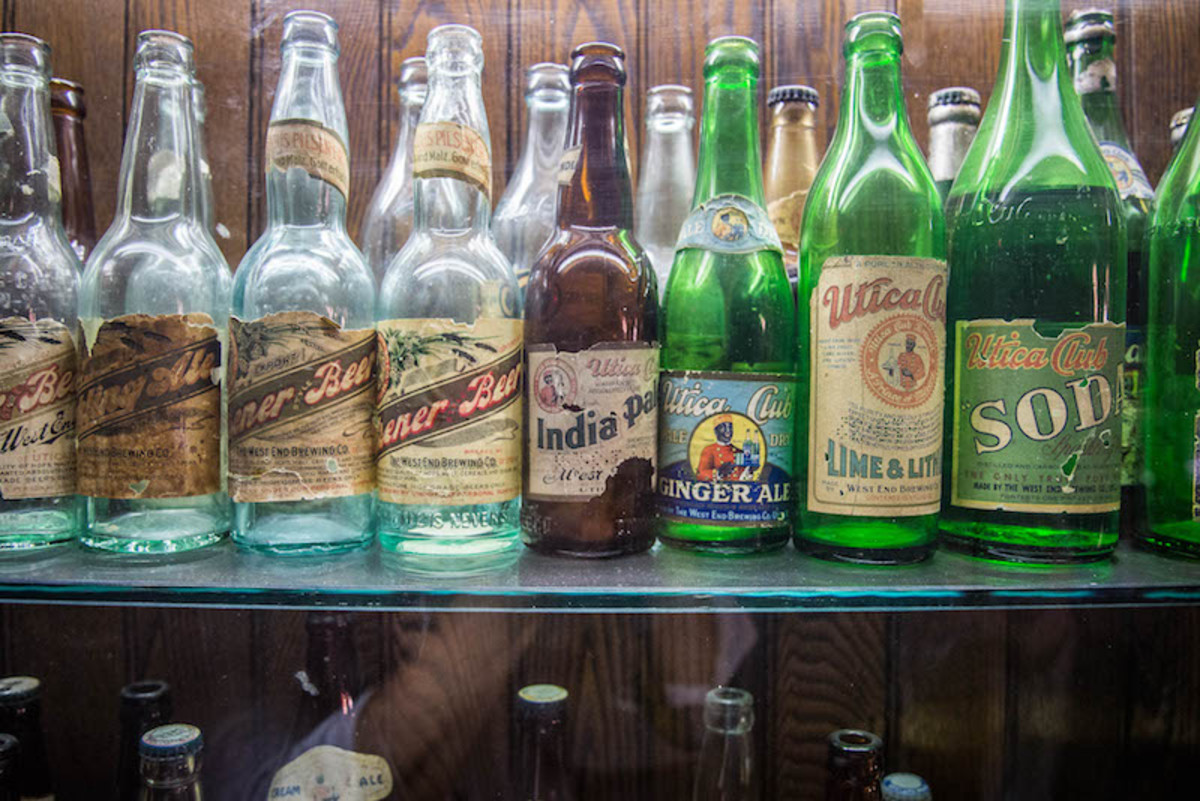
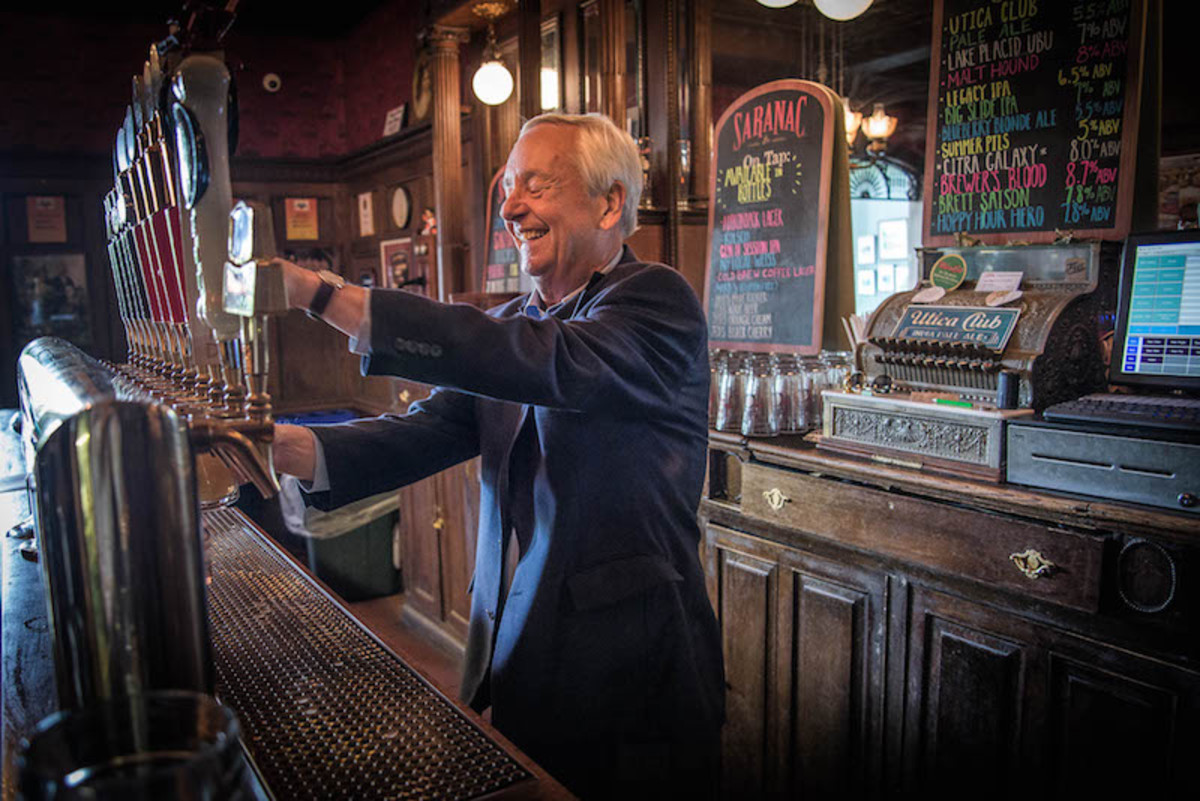
No matter where you go in Central New York, you’ll find one thing that makes it stand out—the proximity of the agriculture that supports brewing (hops, malt, apple trees, and more) and the brewing process itself. That tight loop and close interaction between the growers of the ingredients and the makers of the end products, is what earns them the “Brew” in “Brew Central New York.”
by Jamie Bogner